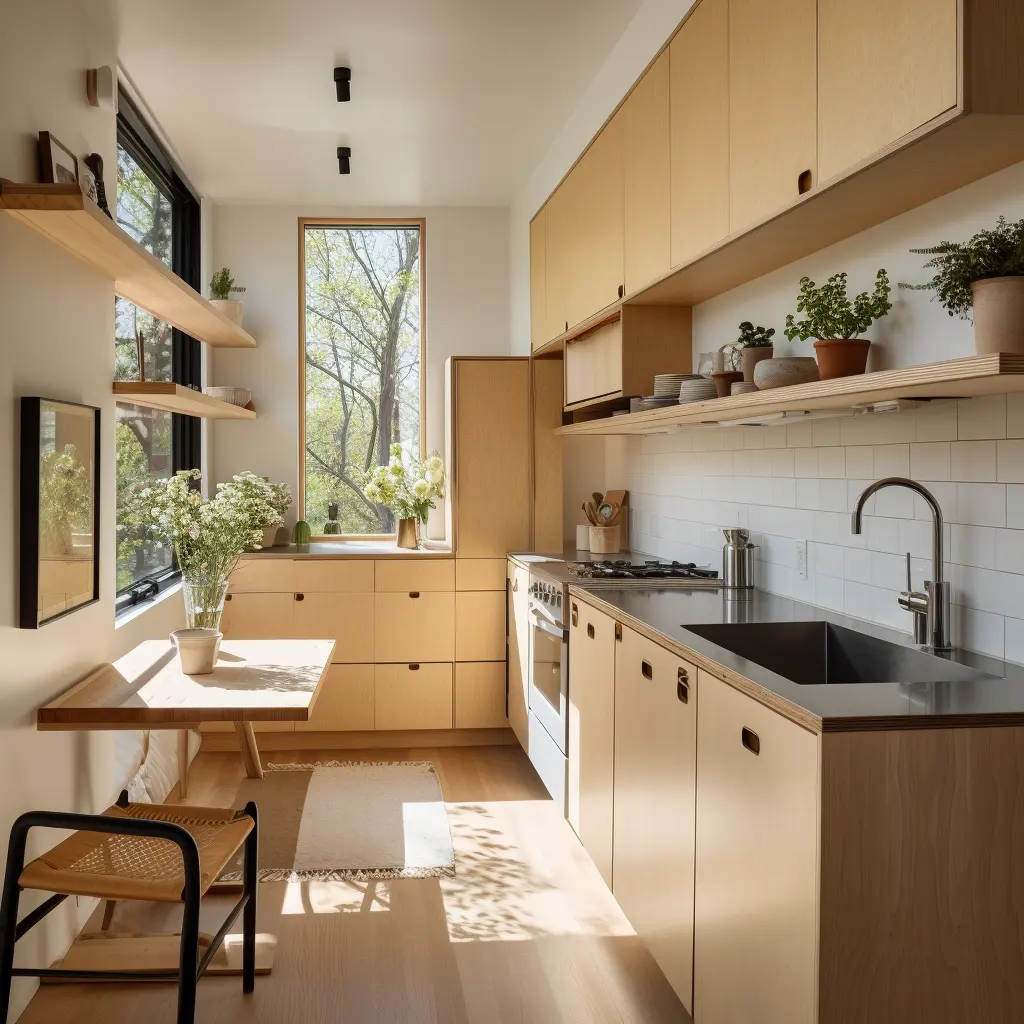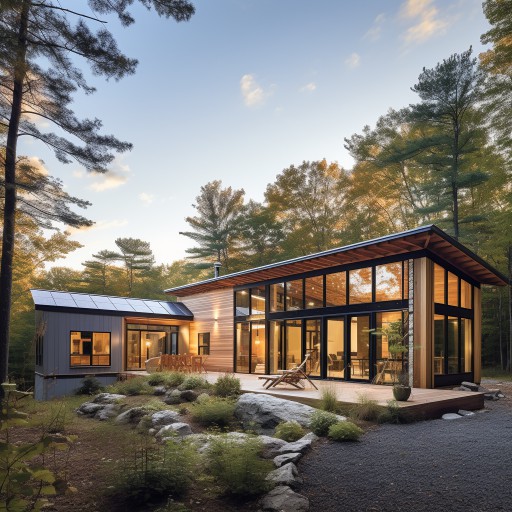How to Remodel Your Kitchen: Planning Guide & Workbook

co-founder
- 1. The Importance of Pre-Design and Inspiration
- 2. Why Permits Are Essential
- 3. Planning Ahead and Being Realistic
- 4. When to Bring in a Designer or Architect
- 5. Planning and Budgeting
- 6. Change Orders and Cost Overruns
- 7. A Little Diatribe: The Reality of Home Design TV Shows
- 8. Concluding Remarks
- Kitchen Remodel Planning Workbook
Whether you're tackling a complete overhaul or just refreshing your space, you're in for a journey. But don't worry - we're here to walk you through every step. We’ll talk through the basics that are worth covering first, then give you a workbook that you can go through on your own to answer questions before you start hiring a kitchen remodeling contractor. Once you’re ready to hire, check out our guide on building out your remodeling team (or any of the other guides if you want to dig more deeply into building science or the building process!)
1. The Importance of Pre-Design and Inspiration
Uncovering Your Style:
Before you swing a sledgehammer or pick out countertops, start with inspiration. Look at home improvement websites, magazines, and even real estate listings to identify what draws your eye. Are you attracted to sleek modern lines or the warm appeal of a country kitchen? Do you love the stark contrast of dark cabinetry with light countertops, or are you drawn to a monochromatic palette?
To help pinpoint what's resonating with you, ask yourself why you like each image. Is it the layout? The color scheme? The specific type of finishes or fixtures? Make a note of these specifics to help inform your design decisions.
Visualizing Your Space:
Beyond just style, consider the functionality of your space. Do you need more counter space? Better lighting? Additional storage? Think about how you use your kitchen and what features could make it more efficient and enjoyable.
One way to think about this is to imagine yourself in a few different scenarios in your kitchen. What does a typical holiday look like for you? Are you entertaining a lot? How do you envision yourself using your kitchen on a lazy Saturday or busy weeknight? All of these scenarios can help you figure out what’s most important to you. There are bound to be trade-offs that you’ll need to make, so knowing what’s important can help you figure out what you absolutely need, as opposed to what is just nice-to-have.
2. Why Permits Are Essential
Protecting Your Investment:
Permits are essential to ensure that your remodel meets local building codes and safety standards. They protect your investment by helping to ensure that work is done right and won't need to be redone later. Especially if there are any structural changes happening, or changes to electrical or plumbing, you’re likely going to need permits. Don’t shortcut this in the name of expediency or cost. You don’t want to end up going to sell your home only to find that you can’t because you took a shortcut.
Getting Your Permits:
To obtain permits, you'll typically need to submit plans for your remodel to your local building department. Depending on your jurisdiction, you may need separate permits for different aspects of your project like electrical work, plumbing, and structural changes. Fees vary, so it's best to research this as part of your early budget planning. Your contractor or architect can often help with this, but it’s a fair amount of work, so don’t expect their time to be free on this step.
3. Planning Ahead and Being Realistic
A Realistic Timeline:
One of the most common pitfalls in a kitchen remodel is underestimating the time it will take. Everything takes longer than expected when you account for variables such as delivery lead times, the sequence of work, weekends, holidays, and unforeseen delays. We’ve all seen supply chain issues over the last few years, but it can also be challenging to get on your preferred contractor’s schedule. Start early, enjoying the planning process, and make sure you’ve got a plan for what to do when the demolition starts.
The Cost of a Kitchen Remodel:
Budgeting accurately is another crucial part of your planning. Costs can range dramatically based on the scope of your remodel and the materials you select. Aim to get at least three quotes to get a sense of the market rate in your area.
It can’t be stressed enough, but when you’re getting quotes, think long and hard before going with the cheapest quote. Look for a team that you get along with and seems to understand your vision. Most contractors aren’t out to rip you off. You may become a great long term client. Finding a contractor you love will be worth it for as long as you own your home. And the old adage is true, you get what you pay for.
This doesn’t mean you should overpay for services, but it is why you should get multiple quotes. You’ll also learn a lot about the contractor by the way they handle this step. Some are meticulous and organized and others not so much. Watch out for the latter.
And always factor in a contingency of at least 10-20% to cover any unforeseen costs.
4. When to Bring in a Designer or Architect
The Scope of Work:
A simple kitchen refresh may not require professional design help. However, if your project involves moving walls, or if you want a completely new layout, hiring a designer or architect can be invaluable.
The Role of a Designer:
A designer can help you with the aesthetics of your remodel, ensuring that everything from your countertops to your cabinet hardware works together harmoniously. They can also advise on the latest trends and innovations in kitchen design, like smart appliances and space-saving solutions.
The Role of an Architect:
An architect, on the other hand, is crucial if you plan on changing the structural layout of your kitchen. They will understand the technical aspects of the project, from load-bearing considerations to the placement of plumbing and electrical systems.
5. Planning and Budgeting
Material Costs:
When budgeting for your kitchen remodel, consider both material and labor costs. These will vary based on your location, the size of your kitchen, and the quality of materials you choose. Don't forget to include appliances in your budget, as well as less obvious items like lighting fixtures, a sink, and a faucet.
Labor Costs:
Labor will likely be your most significant expense. Costs will depend on the complexity of your remodel and the professionals you need to hire, which may include a general contractor, electricians, plumbers, and painters.
6. Change Orders and Cost Overruns
Change orders are alterations to the initial agreed-upon plan. They can happen when you decide to change materials or designs midway through the project, or if unexpected issues arise during construction. Each change order can lead to cost overruns and delays in the timeline.
To minimize change orders, spend ample time in the planning stage to finalize your design and choose materials. But even with the best planning, be prepared for surprises, especially in older homes where you might uncover issues like outdated wiring or hidden water damage.
7. A Little Diatribe: The Reality of Home Design TV Shows
As entertaining as home design TV shows can be, they often present a skewed view of remodeling. Timelines are drastically condensed, and budgets are sometimes unrealistic, not accounting for the labor costs of having an entire crew working around the clock.
Additionally, product placements can cover a significant part of the cost on these shows, an advantage not available to the average homeowner. Use these shows for inspiration but take their remodeling portrayals with a grain of salt.
8. Concluding Remarks
Kitchen remodeling can be a rewarding experience, leading to a space that is both beautiful and functional. However, it requires careful planning and realistic expectations. Understanding the process and the potential challenges can help you manage your project successfully and enjoy the journey as much as the result.
Stay tuned for our upcoming detailed guides on each stage of the kitchen remodeling process. Happy remodeling!
Kitchen Remodel Planning Workbook
I. INSPIRATION & GOALS
Identify Your Style:
- Look at home improvement websites, magazines, and even real estate listings for inspiration.
- Make a note of recurring themes in the images you like.
Define Your Goals:
- Write down what you hope to achieve with this remodel. Is it more space, updated look, increased home value, or improved functionality?
- List specific elements you want in your new kitchen (e.g., an island, more counter space, a double oven).
II. FUNCTIONAL NEEDS
Analyze Your Space:
- Note down current issues with your kitchen layout or storage.
- Identify solutions that could solve these issues in your remodel.
Appliance Needs:
- List the appliances you plan to replace or add.
- Document your preferences for these appliances (brand, features, etc.).
III. DESIGN & MATERIALS
Color Scheme & Style:
- Based on your inspiration, note down your desired color scheme and style.
Materials:
- For each element (cabinets, countertops, backsplash, flooring), write down your preferred materials.
- Research and note down the average cost per square foot for each of your chosen materials.
IV. BUDGETING
Estimated Material Costs:
- Multiply your material costs by the estimated square footage they'll cover to get a rough idea of your material budget.
Appliance Costs:
- Research prices for your chosen appliances and add these to your budget.
Labor Costs:
- Reach out to a few contractors for ballpark labor estimates based on your planned remodel.
- Add this estimate to your budget.
Contingency:
- Add 10-20% of your total budget as a contingency for unexpected costs.
V. PLANNING
Timeline:
- Estimate when you would like to start and end your project.
- Remember that projects often take longer than anticipated. Permitting:
- Research local permit requirements and their costs.
- Add this to your budget.
Contractors:
- Research potential contractors and note down their contact information.
Designers or Architects:
- If necessary, research potential designers or architects and note down their contact information.
This workbook should be used as a living document that you add to and adjust as you continue through the planning process. The more information you have compiled, the easier it will be when you reach out to vendors and professionals. And remember, flexibility is key to navigating any remodel project!

Renovate with EcoHome
EcoHome empowers homeowners to confidently build healthy and comfortable homes for a fair price.
Sign UpLocations View All →
NY
- Albany
- Binghamton
- Buffalo
- Esopus
- Freeport
- Hempstead
- Highland
- Kingston
- Long Beach
- Marlboro
- Mount Vernon
- New Paltz
- New Rochelle
- New York City
- Niagara Falls
- North Tonawanda
- Olivebridge
- Plattekill
- Rochester
- Rome
- Saugerties
- Schenectady
- Shandaken
- Syracuse
- Troy
- Utica
- Valley Stream
- Wallkill
- Woodstock
- Yonkers
NJ
- Bayonne
- Brick
- Camden
- Cherry Hill
- Clifton
- East Orange
- Edison
- Elizabeth
- Jersey City
- Lakewood
- Middletown
- Newark
- Old Bridge
- Passaic
- Paterson
- Toms River
- Trenton
- Union City
- Woodbridge
CT
PA
- Allentown
- Altoona
- Bethel Park
- Bethlehem
- Chester
- Easton
- Harrisburg
- Hazleton
- Lancaster
- Lebanon
- Monroeville
- Philadelphia
- Pittsburgh
- Reading
- Scranton
- Wayne
- Wilkes Barre
MD
- Abingdon
- Baltimore
- Bethesda
- Bowie
- Columbia
- Dundalk
- Ellicott City
- Frederick
- Gaithersburg
- Germantown
- Glen Burnie
- Potomac
- Rockville
- Severn
- Silver Spring
- Towson
- Waldorf



